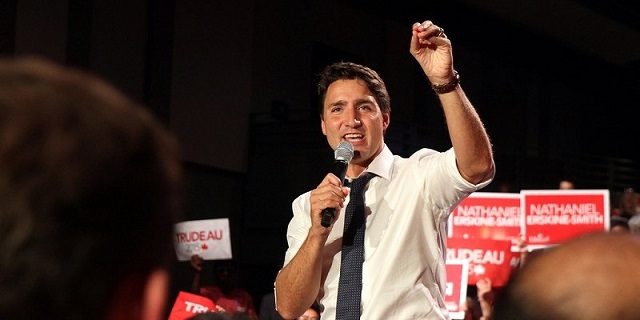Opinion
5,240 voters supported the Ward System. That is more than some elected politicians received. Not to be ignored.

5,240 voters in 2013 supported the ward system of municipal governance but it wasn’t enough. Some will say that settles the issue in perpetuity or forever.
The plebiscite was a vote on the ward system to help find one of many solutions to end the disparity between the north and south in such issues like absence of a high school north of the river or the unequal distribution of recreational facilities.
The city council favored the at-large system, and allocated $30,000 to present a side to the issue. They held a townhall information meeting hosted by popular ex-councillor Larry Pimm who extolled the virtues of the current at-large system. Reminding everyone; “To dance with the one that brought you”. No ward system advocate was invited.
Compare city hall, with $30,000 against a few volunteers with no budget, and you have an epic “David and Goliath” situation.
5,240 voters supported it, considering that the majority of school board trustees garnered fewer votes and they believe they represent the citizens.
The vote was held four years ago during an election, and some will argue that settles the matter forever. No matter that about 10% of the population moves every year, and that someone who is 18,19, 20, or 21 now could vote now that could not have voted then.
One suggested that it would be disrespectful of the voters in 2013 if we were to have another plebiscite in the future. Why do we have elections every 4 years? Possibly to bring in new ideas, people and ways to deal with new issues and events, to change course when a current course is not working?
The major is issue was the disparity between north of the river and south of the river. The last school built north of the river was in 1985, the lack of a high school north of the river and the fact that there is only one recreational centre north of the river with 11 south of the river. The ward system was brought up as a possible way to ensure their voice was heard.
Wards versus at large: Niagara Falls (population of 88,071),candidates discuss. If you want to get in the game, some say a ward system is helpful. … Now, more than a decade into an at-large system where eight councillors are elected to represent the entire city, some candidates are calling for a return to the ward system.
It may better represent the city, but some people find it confusing. One political scientist says we should consider bringing back the ward system with the civic election one week away.
A ward system, essentially, has an elected representative from varying neighbourhoods around the city.
Langara College political scientist Peter Prontzos says it’s a little more democratic and things won’t be rushed through council because there are more voices to be heard and more issues brought to the table.
But he warns there are cons.
“It may be a little more confusing in some ways and there may be occasional gridlock on city council, but I think that’s relatively minor.”
He says right now those who run for office are people with money who only represent wealthy neighbourhoods where something like public transit may not be issue.
Issues like no high school or biased distribution of recreational centres, may get on council’s agenda and be heard through a ward system.
Issues like; On the north side we have (1) the Dawe Centre while on the south side we have; (10), the Downtown Recreation Centre, Michener Aquatic Centre, Downtown Arena, Centrium complex, Collicutt Recreation Centre, Pidherney Curling Centre, Kinex Arena, Kinsmen Community Arenas, Red Deer Curling Centre, and the under-construction Gary W. Harris Centre. The city is also talking about replacing the downtown recreation centre with an expanded 50m pool.
The volunteers proposed 4 wards with 2 councillors per ward, and 5,240 voters supported the idea. Others thought not yet and some were totally against it, period. Should the politicians write off 5,240 voters as a non issue? City should be inclusive of everyone, including those not crowding the stage during the discussions on the latest issue of the day.
Jordy Smith was quite eloquent in his defence of the ward system;
“Wards provide direct representation within the city council. They allow anyone who sees an issue in the city to go to their particular councillor and voice their concern. In this situation, the councillor ensures the person’s, and their district’s, voice is heard. If they don’t represent their community well, their constituents can vote for a new councillor in the next election.
In our current system, a person can reach out to some or all of Red Deer’s councillors, but if the issue isn’t prevalent across the entire city, it is unlikely to enter the council meeting. Important neighbourhood issues may take a backseat to other matters in distant parts of the city. This scenario isn’t always a problem in at-large systems, but it often favours certain parts of a city more than others. This issue is especially true when a majority of councillors all live in a similar part of the city.
In Red Deer, seven of our eight councillors live on the South-East side of the river; in fact, many of our past councils have had disproportionate representation from the South-East side. A ward system gives each part of Red Deer direct representation and a voice in council decisions.”
The point is that the “Ward System” is not a panacea to the disparity issue and no one thinks it is but it could be a step in addressing the issue. Many candidates talk about the “Riverlands” as the panacea to downtown issues, but it is not, it is but a step to addressing the issues.
I ask the candidates who have said that the vote should stand and not be voted on again out of respect for the 2013 voters, should we let the federal vote of 2015, where we elected a Liberal government and the provincial vote of 2015, where we elected a NDP government stand in perpetuity? I didn’t think so. That is why we have votes, because we may change our mind. Thank you.
Read more about the Red Deer Municipal Election on Todayville.
Opinion
Climate Murder? Media Picks Up Novel Legal Theory Suggesting Big Oil Is Homicidal

 From the Daily Caller News Foundation
From the Daily Caller News Foundation
By Nick Pope
A new narrative is making its way through major media outlets about major oil corporations: climate change that they purportedly caused is taking lives, and they could be held liable for homicide.
In recent weeks, numerous outlets have run stories or opinion pieces promoting or otherwise examining the novel legal theory, which is the subject of a new paper published by the Harvard Environmental Law Review, according to a Tuesday E&E News report detailing the architects’ efforts to market their idea to prosecutors. The Boston Globe, The Guardian, Newsweek, Inside Climate News and other outlets have all recently published pieces promoting the idea that leading oil companies could or should be charged with murder for their role in climate change, which the theory’s architects claim has caused thousands of deaths in the U.S.
David Arkush, who runs Public Citizen’s climate program, and Donald Braman, a professor at George Washington University’s law school, articulated the theory in a March paper. Public Citizen is a left-of-center organization founded by failed Green Party presidential candidate Ralph Nader that, among other things, pressures American International Group (AIG) to stop providing insurance coverage for fossil fuel companies, according to its website and Influence Watch.
“Activists and journalists have called executives of major oil companies ‘mass murderers,’ lamenting that ‘millions of human beings will die so that they can have private planes and huge mansions,’ and a growing chorus of communities devastated by [fossil fuel companies’] lethal conduct have begun to demand accountability,” the authors state in their paper. “But as of this writing, no prosecutor in any jurisdiction has charged [fossil fuel companies] with any form of homicide over climate-related deaths. They should.”
The paper also suggests that the American Petroleum Institute (API), a leading trade association for the oil and gas industry, was involved in the industry’s purported attempts to obscure the effects of emissions.
“The record of the past two decades demonstrates that the industry has achieved its goal of providing affordable, reliable American energy to U.S. consumers while substantially reducing emissions and our environmental footprint,” a spokesperson for API told the Daily Caller News Foundation. “Any suggestion to the contrary is false.”
The two authors contend that energy corporations were aware of the warming that emissions from their products and operations would cause for decades, and that those companies decided to mislead the public and obscure what effects those emissions may have. A similar narrative lies at the heart of climate lawsuits that have been filed against energy companies in numerous jurisdictions across the U.S. in recent years.
Arkush wrote a Wednesday piece for Newsweek laying out his theory and referencing these climate lawsuits, opining that the fossil fuel industry’s purported “crimes may be among the, if not the, most consequential in human history.” The Boston Globe ran a similar opinion piece authored by Arkush and another official for Public Citizen on March 17.
The Guardian ran its own piece about the climate homicide theory on March 21, using the headline “Fossil fuel firms could be tried in US for homicide over climate-related deaths, experts say.” Clean Technica, a site that promotes green energy, ran a March 16 piece on the new legal theory with the headline “Climate Criminals — Prosecuting Big Oil For Environmental Crimes.”
Inside Climate News published an April 4 story on the subject, using the headline “Should Big Oil Be Tried for Homicide?” and including excerpts from interviews with the two architects of the climate homicide theory. The pair suggested that the aim is not to punish individuals or seek vengeance, but instead achieve results that would prompt companies to shift their investments away from fossil fuels, according to Inside Climate News’ story.
However, Inside Climate News did quote legal experts who expressed skepticism about the theory’s merits.
“I do not believe that a criminal prosecution on homicide charges against the major oil companies is appropriate or can be sustained,” John Coffee Jr., a professor at Columbia Law School who specializes in corporate law, told the outlet.
Nick Pope is a contributor at The Daily Caller.
Economy
Ottawa’s homebuilding plans might discourage much-needed business investment

From the Fraser Institute
In the minds of most Canadians, there’s little connection between housing affordability and productivity growth, a somewhat wonky term used mainly by economists. But in fact, the connection is very real.
To improve affordability, the Trudeau government recently announced various financing programs to encourage more investment in residential housing including $6 billion for the Canada Housing Infrastructure Fund and $15 billion for an apartment construction loan program.
Meanwhile, Carolyn Rogers, senior deputy governor of the Bank of Canada, recently said weak business investment is contributing to Canada’s weak growth in productivity (essentially the value of economic output per hour of work). Therefore, business investment to promote productivity growth and income growth for workers is also an economic priority.
But here’s the problem. There’s only so much financial capital at reasonable interest rates to go around.
Because Canada is a small open economy, it might seem that Canadian investors have unlimited access to offshore financial capital, but this is not true. Foreign lenders and investors incur foreign exchange risk when investing in Canadian-dollar denominated assets, and the risk that Canadian asset values will decline in real value. Suppliers of financial capital expect to receive higher yields on their investments for taking on more risk. Hence, investment in residential housing (which the Trudeau government wants to promote) and investment in business assets (which the Bank of Canada warns is weak) compete against each other for scarce financial capital supplied by both domestic and foreign savers.
For perspective, investment in residential housing as a share of total investment increased from 22.4 per cent in 2000 to 41.3 per cent in 2021. Over the same period, investment in two asset categories critical to improving productivity—information and communications equipment and intellectual property products including computer software—decreased from 30.3 per cent of total domestic investment in 2000 to 22.7 per cent in 2021.
What are the potential solutions?
Of course, more financial capital might be available at existing interest rates for domestic investment in residential housing and productivity-enhancing business assets if investment growth declines in other asset categories such as transportation, roads and hospitals. But these assets also contribute to improved productivity and living standards.
Regulatory and legal pressures on Canadian pension funds to invest more in Canada and less abroad would also free up domestic savings for increased investments in residential housing, machinery and equipment and intellectual property products. But this amounts to an implicit tax on Canadians with domestic pension fund holdings to subsidize other investors.
Alternatively, to increase domestic savings, governments in Canada could increase consumption taxes (e.g. sales taxes) while reducing or even eliminating capital gains taxes, which reduce the after-tax expected returns to investing in businesses, particularly riskier new and emerging domestic companies. (Although according to the recent federal budget, the Trudeau government plans to increase capital gains taxes.)
Or governments could reduce the regulatory burden on private-sector businesses, especially small and medium-sized enterprises, so financial capital and other inputs used to comply with often duplicative or excessive regulation can be used to invest in productivity-enhancing assets. And governments could eliminate restrictions on foreign investment in large parts of the Canadian economy including telecommunications, banking and transportation. By increasing competition, governments can improve productivity.
Eliminating such restrictions would also arguably increase the supply of foreign financial capital flowing into Canada to the extent that large foreign investors would prefer to manage their Canadian assets rather than take portfolio investment positions in Canadian-owned companies.
Canadians would undoubtedly benefit from increases in housing construction (and subsequently, increased affordability) and improved productivity from increased business investment. However, government subsidies to home builders, including the billions recently announced by the Trudeau government, simply move available domestic savings from one set of investments to another. The policy goal should be to increase the availability of risk-taking financial capital so the costs of capital decrease for Canadian investors.
Author:
-

 Education2 days ago
Education2 days agoSupport a young reader through the Tim Hortons Smile Cookie campaign
-

 Business2 days ago
Business2 days agoWEF panelist suggests COVID response accustomed people to the idea of CBDCs
-

 illegal immigration2 days ago
illegal immigration2 days agoFlight Docs Reveal Which Cities Are Receiving Migrants Under Biden’s Parole Program
-

 Fraser Institute2 days ago
Fraser Institute2 days agoCanada can solve its productivity ‘emergency’—we just need politicians on board
-

 Environment2 days ago
Environment2 days agoJournalism Misrepresent Climate Science
-

 International2 days ago
International2 days agoNYPD storms protest-occupied Columbia building, several arrested
-

 illegal immigration2 days ago
illegal immigration2 days agoOklahoma Just Became The Latest State To Take Immigration Enforcement Into Its Own Hands
-

 Economy2 days ago
Economy2 days agoToday’s federal government—massive spending growth and epic betting







